This installment of our blog series on Basic Audio Techniques for Video explains several techniques for hiding microphones on a film set to capture hard-to-reach dialogue. If you missed the previous installment explaining four techniques for capturing audio in a car, you can read it here.
When filming on set, it can be difficult to capture great audio while keeping microphones and wires out of frame. In this installment of our Basic Audio Techniques for Video series, we’ll cover a variety of techniques for hiding plant mics in and around a film set to capture hard-to-reach dialogue.
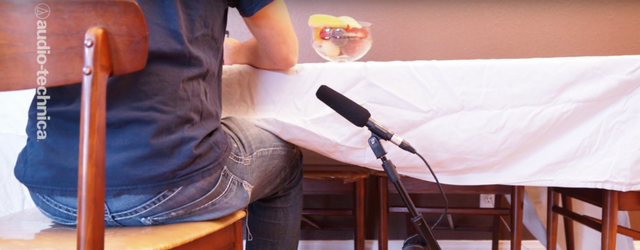
What Is a Plant Mic?
The term “plant mic” refers to any microphone that is planted in place, as opposed to being boomed or worn on the body. Unlike a boom microphone, which follows actors to capture their dialogue, a plant mic requires actors to travel to the microphone.What Types of Microphones Can be Used as a Plant Mic?
Any type of microphone can be used as a plant mic, it just depends on the type of audio you’re trying to record. For capturing dialogue, a microphone with a high level of reach and sensitivity would be ideal. If you’re trying to capture loud sound effects, a simple dynamic handheld microphone with short range and low sensitivity might be a good choice.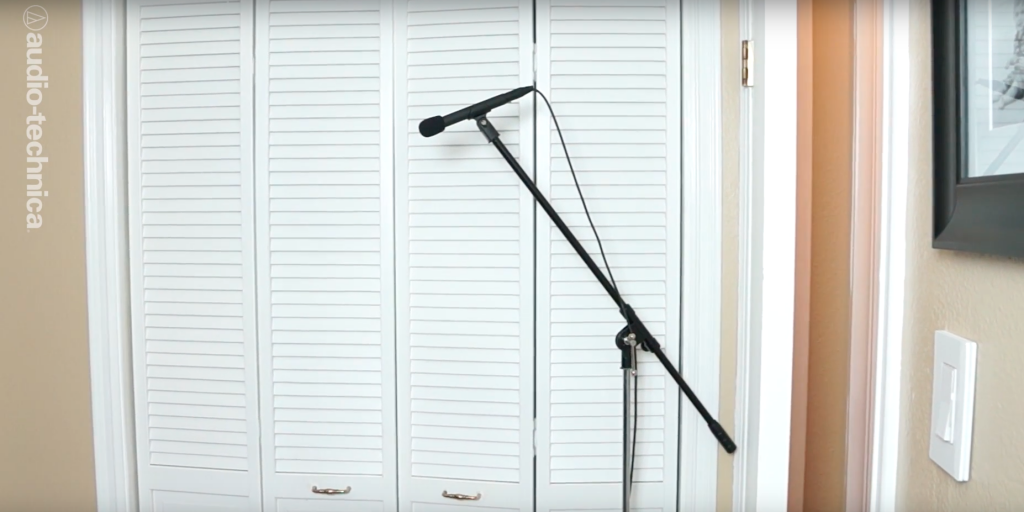 For example, you could use a shotgun mic clamped just outside of frame, such as behind a doorjamb, to capture conversation in a small room. Additionally, you could hide a lavalier microphone on a wall or behind tabletop props to grab dialogue from areas in the set that might be difficult to boom.
For example, you could use a shotgun mic clamped just outside of frame, such as behind a doorjamb, to capture conversation in a small room. Additionally, you could hide a lavalier microphone on a wall or behind tabletop props to grab dialogue from areas in the set that might be difficult to boom.
Tips for Hiding Plant Mics
When filming on set, it’s important to remember that your plant mic only needs to be hidden from the camera frame, but not necessarily from the actors or crew. Follow these techniques and tips to successfully keep your plant mic out of your film frame.1. Hide a Plant Mic Behind a Stage Prop
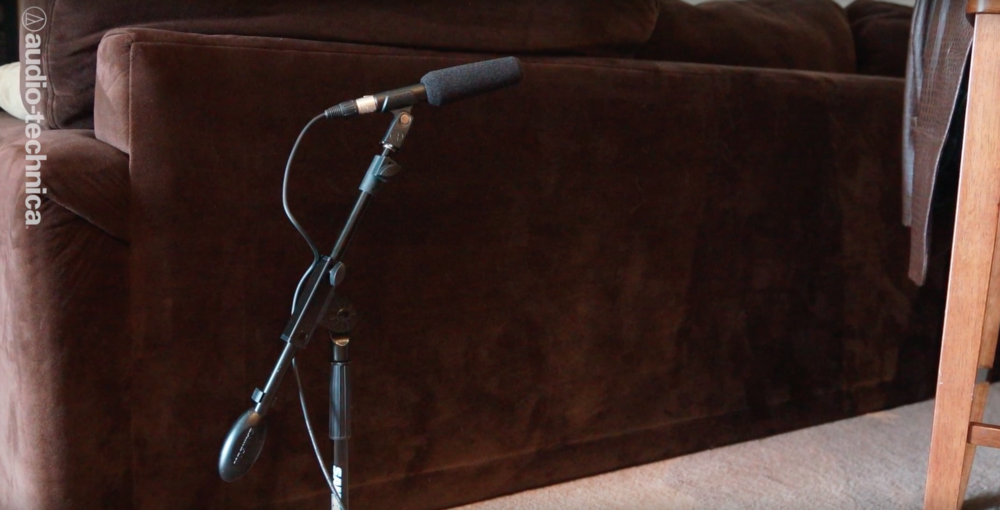
One easy way to hide the plant mic is by placing it behind a prop or set piece, such as an ottoman or magazine rack, to block the view from the camera. This way, you can still capture dialogue from an actor in a reading chair that’s situated where a boom might be out of the question.
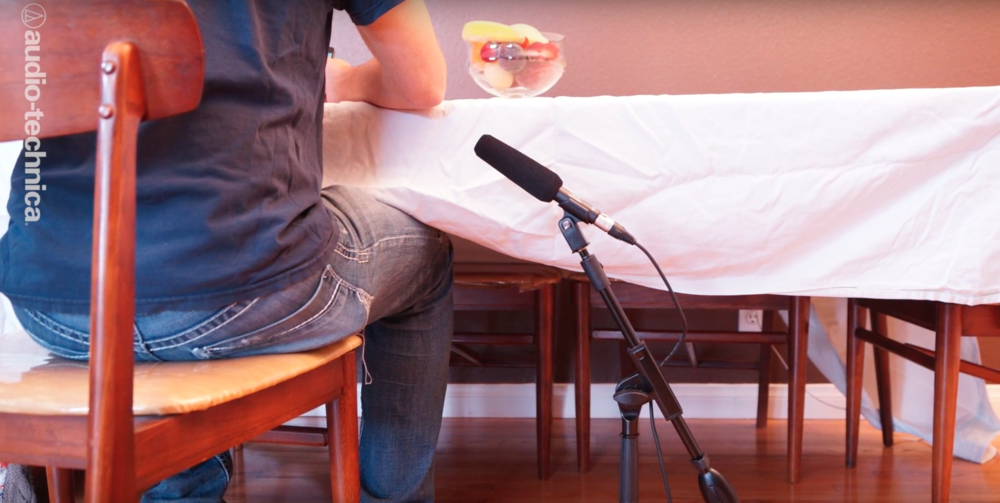
In a dining room where a chandelier prevents overhead booming, a shotgun mic could simply be hidden to the side of the actor below the table height to prevent it from being seen by the camera.
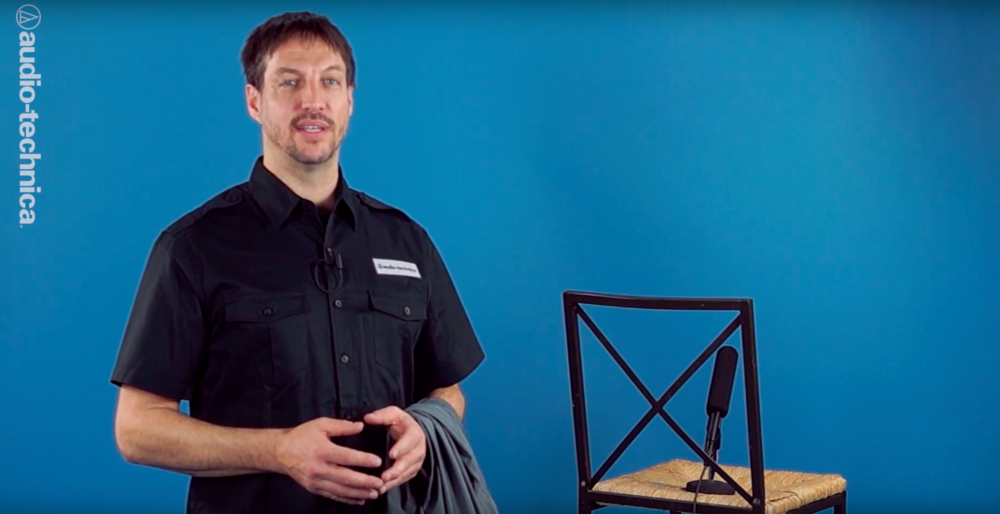
More difficult set situations require some more clever methods to successfully hide a plant mic. For instance, if you’re shooting in a room such as a boudoir where there are mirrors that would quickly reveal the boom pole from any position, you could place a shotgun mic on a dressing chair and drape a blouse or sweater on the backrest to conceal the microphone.

Some sets, such as a hotel lobby, can be especially daunting given the reflective surfaces of shiny elevator doors that could easily reveal a boomed mic. If you’re planning to shoot wide in a setting like a hotel lobby, it makes it even more difficult to get close-up audio while successfully hiding the mic. Fortunately, an option here would be to place a large potted fake tree next to the elevators and conceal your plant mic inside, putting the microphone just a couple of feet away from the elevator doors to capture actors’ voices while entering and exiting.
2. Hide a Plant Mic on the Ground, Indoors or Outdoors
Another challenging film setting could be outdoors on the beach; however, by digging a shallow pit in the sand and using a small rock to hold it in the hole, you can easily conceal your microphone while remaining close enough to actors to capture great audio.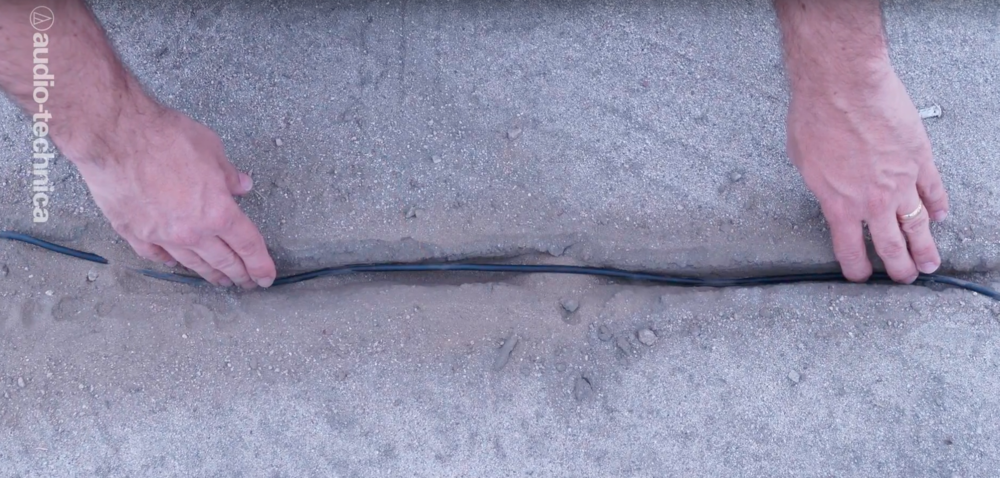
While XLR cables can be hidden within a shallow trench in the ground outdoors, they can also be easily concealed indoors by using a small area rug or by taping the cables along patterns or lines in floor tiling.
3. Use a Lavalier Plant Mic for Tricky Sets
Due to their small size, lavaliers are a great option for easily hiding microphones on set. They can be mounted behind anything as thin as a pencil or concealed within the narrow strip of shadow cast by framed artwork or wall décor.

Plant mics are also great to use along lit walls where boom shadows would be a problem, or too deep in the set where the frame gets too wide. For example, imagine you’re shooting a small restaurant and are looking to capture a wide-angle shot including a table in the foreground and one in the background. While the table in the foreground would be easy to boom, it would be out of the question to boom the table in the back without the boom being seen. Some options here are to tape a lavalier microphone to any object on the table or turn the plant mic into a true plant mic by hiding it in the flower centerpiece on the table.
Tips for Using Lavaliers as Plant Mics
If you’re using a lavalier plant mic, make sure you don’t tape the microphone directly to walls, furniture or the side of props. Footsteps or any physical contact with these surfaces may create vibrations that transmit straight into your microphone. Instead, float your lavalier in a small shock mount that will isolate the capsule from these distractions. To do so, just make a simple ring out of some cloth gaffer’s or camera tape and use that to attach your mic to the wall or prop. Then, add a small strip of tape lower down for strain relief and to tidy up the cable.
Additionally, the sensitivity and potential reach of your specific lavalier can affect the quality of audio. Some lavaliers, such as the AT803, emphasize the voice of the actor in close range while holding back as much background noise as possible. This lavalier can work as a plant mic if the actor is able to lean in and speak to the mic, such as with a prop telephone or intercom.
Other lavaliers, such as the AT899 or MT830R, allow the actors to sound more natural as if they were being boomed, but at the cost of being more sensitive to distant noises. When used as plant mics, they can reach up to 4 or 5 feet away and still provide broadcast-quality dialogue.
For most applications, choose lavaliers that still sound bright and clear at least a few feet away. Most of the time, we go with omnidirectional patterns to hear dialogue from multiple characters who might be on either side of the mic. Other times, the use of a directional lavalier, such as the AT898, allows you to treat the microphone as a miniature shotgun and aim it in one direction.
Instead, float your lavalier in a small shock mount that will isolate the capsule from these distractions. To do so, just make a simple ring out of some cloth gaffer’s or camera tape and use that to attach your mic to the wall or prop. Then, add a small strip of tape lower down for strain relief and to tidy up the cable.
Additionally, the sensitivity and potential reach of your specific lavalier can affect the quality of audio. Some lavaliers, such as the AT803, emphasize the voice of the actor in close range while holding back as much background noise as possible. This lavalier can work as a plant mic if the actor is able to lean in and speak to the mic, such as with a prop telephone or intercom.
Other lavaliers, such as the AT899 or MT830R, allow the actors to sound more natural as if they were being boomed, but at the cost of being more sensitive to distant noises. When used as plant mics, they can reach up to 4 or 5 feet away and still provide broadcast-quality dialogue.
For most applications, choose lavaliers that still sound bright and clear at least a few feet away. Most of the time, we go with omnidirectional patterns to hear dialogue from multiple characters who might be on either side of the mic. Other times, the use of a directional lavalier, such as the AT898, allows you to treat the microphone as a miniature shotgun and aim it in one direction.
Follow these tips for hiding your plant mic and no place will be out of reach for capturing audio for all of your filming needs!
What did you think of our plant mic tips? Let us know in the comments below!